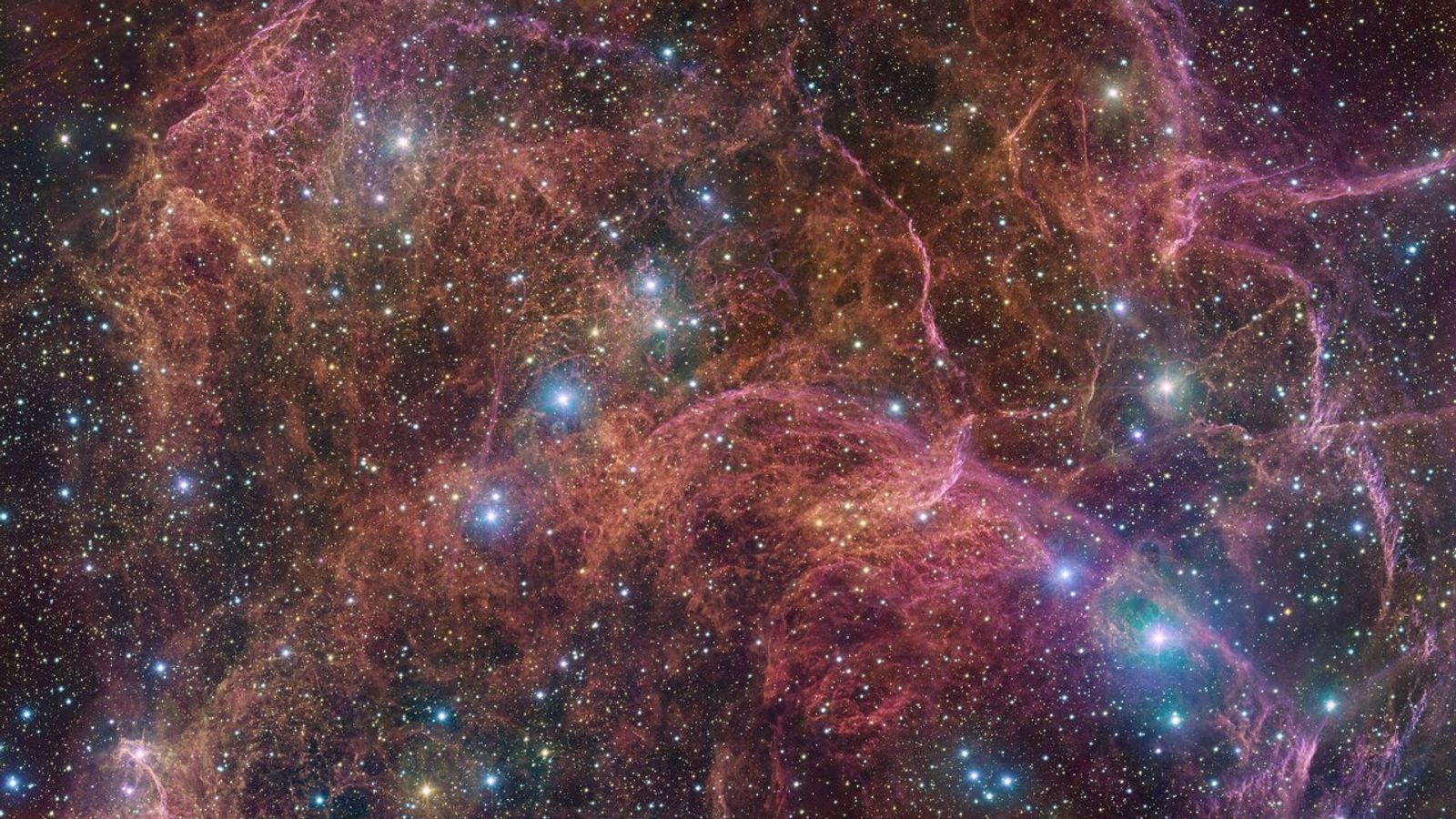A new image has revealed the stunning ghostly remains of a gigantic star.
The wispy pink structure, suitably tinged with orange given the picture’s release on Halloween, is all that is left of a massive star which died in a powerful explosion around 11,000 years ago.
Named Vela, the remnants seen in the image alone are enough to fit nine entire moons – and the whole cloud is even larger than that.
It is one of the closest supernova remains to Earth, at 800 light years away. To compare, the iconic Pillars of Creation recaptured in glorious detail earlier this month are 6,500 light years away.
The image of Vela was taken by the VLT Survey Telescope at the European Southern Observatory’s (ESO’s) Paranal observatory site in Chile, where parts of the James Bond film Quantum Of Solace were filmed.
The telescope’s camera boasts 268 million pixels and can take images through several filters to let through light of different colours.
Its image of Vela is made up of 554 million pixels, making it a strong contender for your next desktop wallpaper.
In pictures: Partial solar eclipse as it happened
NASA’s James Webb Space Telescope captures stunning new image of Pillars of Creation
Astronomers have mapped the remains of a dead star – with surprising results
What’s the backstory of Vela?
When it is time for the biggest stars to die, they often go out in a huge blast known as a supernova.
The explosions are so large that they send shockwaves through the surrounding gas, compressing it and creating intricate thread-like structures, as seen in the image of Vela.
These structures are heated up by the sheer amount of energy released, which is what makes them so shiny.
What remains of the star is an ultra-dense ball of protons and electrons, forced together into a neutron star.
The Vela remnant’s neutron star happens to be what is known as a pulsar, which spins on its own axis at a whopping speed of more than 10 times per second.









